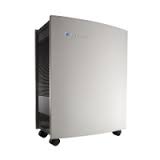Best Air Purifier 2012 Consumer Reports

Before you resort to buying an air purifier, try some simple steps to reduce indoor air irritants, including: Vacuum often and thoroughly with a vacuum with HEPA filtration. Maintain your heating equipment and change filters regularly. Minimize use of candles and wood fires. Use exhaust fans in kitchen, bath, and laundry areas. Don't store chemicals, solvents, glues, or pesticides near your living quarters. If pollen or related allergies keep you from opening windows, run your air conditioner or forced-air cooling system with a clean filter. Types of Air Purifiers The top selling air purifiers are portables; whole-home systems are the other option. We tested portable room models and filters for homes with forced-air heating and cooling systems. These are an option for homes without forced-air heating or cooling. They’re portable—most room air purifiers weigh from 10 to 20 pounds, have a handle, and stand on the floor or on a table, while heavier models might have wheels.

Some have a high-efficiency particulate air (HEPA) filter, which can capture ultrafine particles. Keep in mind: Most HEPA filters need to be replaced annually, an expense that might approach the cost of the air cleaner, but some models are now available with cleanable HEPA filters.
Best Mac Laptop Insurance Room models that use either electrostatic-precipitator or ionizer technology could produce some ozone, a lung irritant.
How Much Does It Cost To Drywall A Small Bathroom Dedicated ozone generators, a subcategory of room models, produce large amounts of ozone by design.
Patio Furniture Phila PaAccording to manufacturers, that is to reduce allergens such as dust, smoke, pollen, germs, and mold. Ozone, however, is a serious health concern, prompting the State of California to ban the sale of ozone generators (and other air purifiers that emit more than 50 parts per billion of ozone) from the general market.

Prices: Range from $50 to $850 Room air purifiers that topped our tests If you already have forced-air heating and cooling, popping in a specialized filter is an inexpensive alternative to a built-in home unit. Basically, it acts as a furnace or central A/C filter that you replace regularly.You slip out the old filter and slide in the replacement. Some are conventional fiberglass filters; others are pleated or electrically charged to pick up particles. (Note that the electrically-charged versions are not actually electrically powered, even when they have names like Electroclean, and they don't produce ozone.) Whole-house air filters generally include a range of standard sizes, with some that adapt to fit different-size filter-box or return-air openings. For thicker filters to fit, you may possibly need to have your ductwork modified by a professional. The filters must be replaced every one to three months. Prices: From $20 to $80 per filter Which air filters scored best in our Ratings?

Many portable (aka room) models have annual operating costs of $150 to $200 for filter replacement and electricity (with the majority of that cost being for filters). Filter prices can range from around $10 each up to about $100 (with some priced well into the hundreds). Some units use a pre-filter to capture large airborne particles before they reach the HEPA filter, possibly extending its life and can range from around $10 to $35. Depending on usage, you typically need to replace filters every 3 months. To cut costs, look for room models that are Energy Star qualified, meaning they are relatively energy-efficient compared to standard models. Some models have washable filters that can be reused. For whole-house filters, annual replacement costs are typically under $100. Any type of air purifier won’t work well if the filter is clogged and dusty, and, if filter is full, it may stop working or even release dirt back into the air. Noise level is important, especially if you run an air purifier in a room where you sleep or work.

For the sake of efficiency (and quietness), we recommend picking a larger unit and running it on a lower speed, rather than cranking up a small one. Room Air Purifier Features Fan: Most room air cleaners use a fan to suck in air for filtration. Those without a fan (the air circulates naturally throughout your home) run more quietly, but those we tested without fans worked poorly. Servicing indicator: A clogged air cleaner works inefficiently. This feature lets you know when the unit needs to be cleaned or the filter replaced. Programmable timer: These controls allow you to set the purifier to run a few hours before you’ll be using a room, or turn it off automatically. Carrying handle: Makes it easy to move unit from room to room. Number of speeds: The unit adjusts to your air-cleaning needs—lower when you are sleeping or working and need quiet, higher when it’s prime pollen time. Ionizer: If a unit has an ionizer (which attracts particles via an effect like static electricity), it’s important that it not produce ozone (it may say on the box or in an operation manual; you can also check our Ratings), a possible lung irritant.

Remote control: Lets you easily adjust settings from across the room. Dirt sensor: In some room models, the unit automatically adjusts fan speed to the level of dirt or dust in the air. Washable pre-filter: A washable—and re-usable—pre- filter collects large particles; if it’s washable, it can help cut overall costs. However, many of our higher-rated models did not have this option. What They Do Well The better air purifiers are especially good at filtering pollutant particles such as dust, smoke from candles or fireplaces, and pollen. What’s Not So Great Volatile organic compounds (VOCs) from adhesives, paints, and cleaning products, and other types of gaseous pollutants, however, are another matter. Some portable models with carbon pre-filters are claimed to filter VOCs, but the Environmental Protection Agency warns that such filters are specific to certain gaseous pollutants, not for others, and that no air purifier is expected to remove all gaseous pollutants found in the typical home.